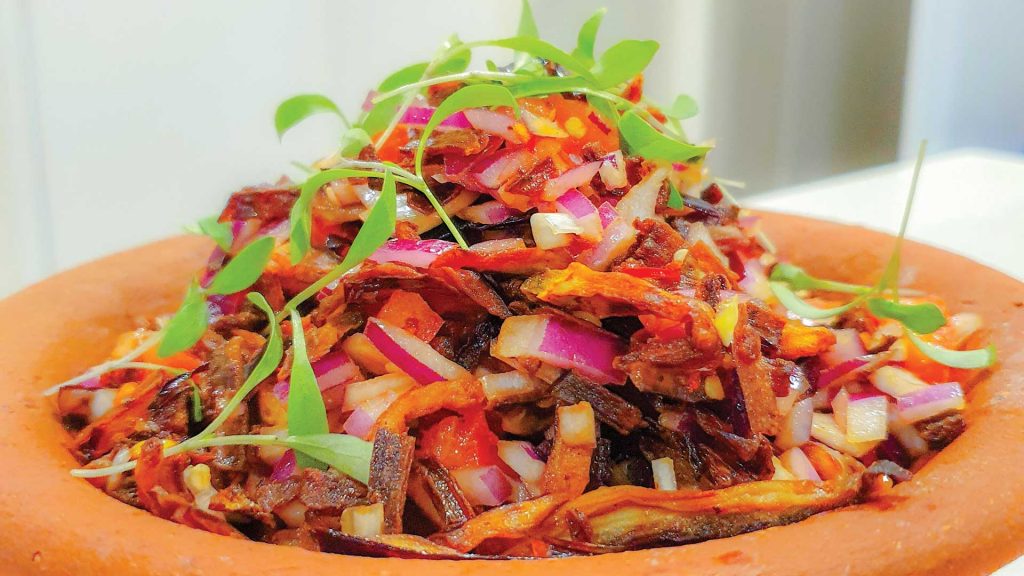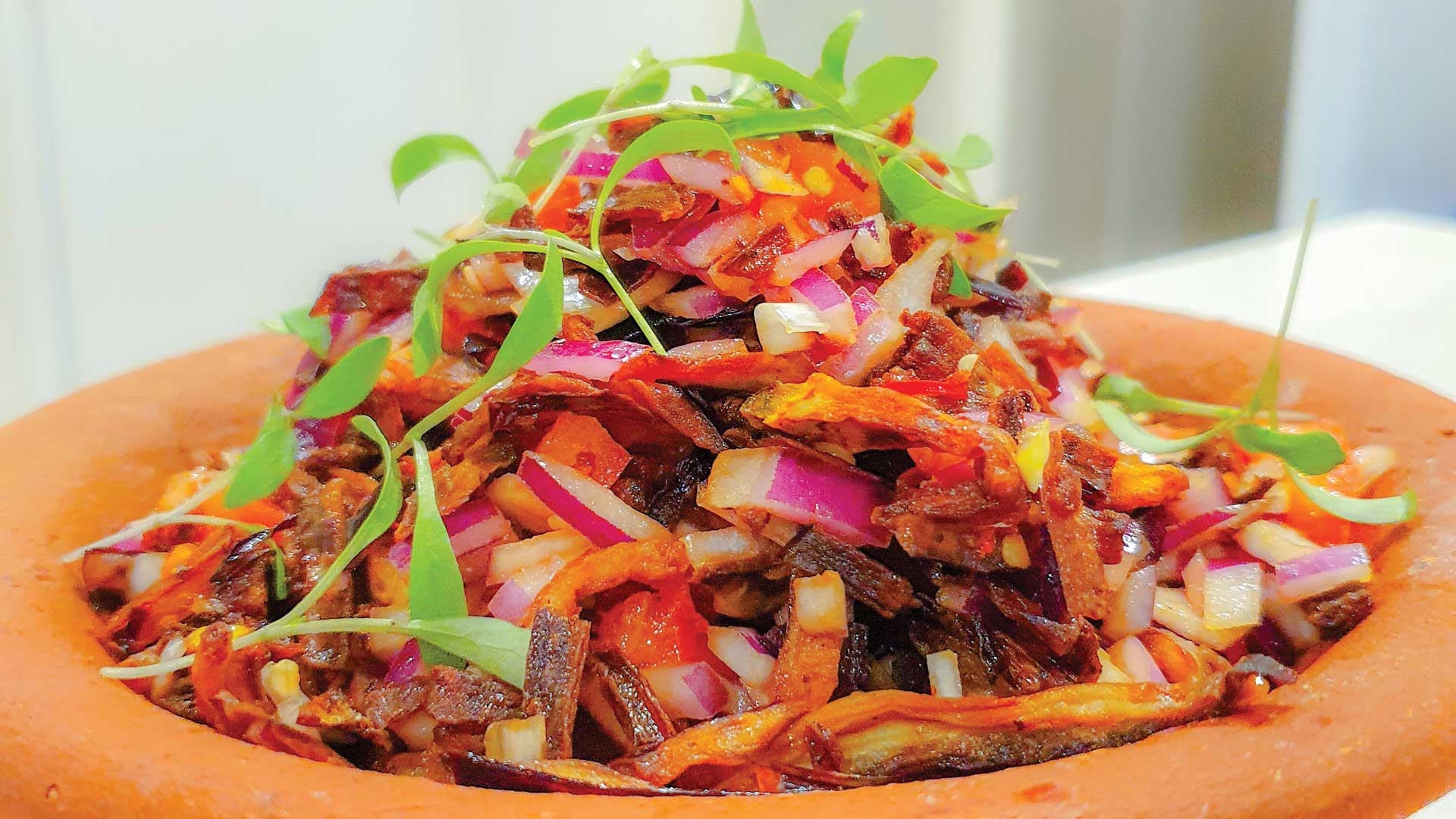Delicious veggie dishes
Dee Williams unearths yummy concoctions
The most common meal in Sri Lanka would have to be rice and curry. No matter where you travel to in the island, rice and curry is consumed by most of the people for lunch or dinner. The curry component is usually associated with meat such as chicken, fish or mutton.
But no rice and curry meal is complete without one or more dishes prepared with seasonal vegetables.
Brinjals are one of my favourite vegetables although they can’t be eaten raw like carrots or beetroot. While growing up in Sri Lanka, I looked forward to eating brinjals because of the way one version of the dish is prepared, resulting in a mix of sweet, sour and spicy flavours.
Slices of brinjals are deep-fried, and flavoured with vinegar and other ingredients to produce a dish that’s known as wambattu moju, which is usually served as a relish with rice and curry. I love cooking a fried brinjal salad with green chillies, tomatoes, onions, lime juice, salt and pepper. It’s a quick and easy dish to put together but the flavours are exceptional.
Another way of preparing brinjals is as a curry with dried fish and tomatoes. The spongy texture of the brinjal and salty fish combine to make it a delicacy.
Having lived in Australia for over 15 years, rarely have I seen the banana blossom (kehel mala) being used in restaurants to prepare dishes. In Sri Lanka, we make banana blossom fry or mallum, or even add it to a curry. With so many people opting for vegetarianism nowadays, the banana blossom is a vegetable that people are beginning to use in a variety of ways.
Recently, I took chunks of the banana blossom, dipped them in a spicy batter and deep-fried them. Then I added a crunchy salad and made a filling – as for taco. Since the banana blossom has quite a neutral taste, it absorbs the added flavours very well. So I added paprika, ground coriander and cumin, as well as salt and pepper, to the batter.

Karawila, which is known as bitter gourd, is not something I enjoyed in my younger days. But I started to appreciate the flavours and benefits of bitter gourd after tasting it the way mum made it.
It’s not a very good-looking or flavourful vegetable so everything depends on the way the dish is prepared. My mother always fried the bitter gourd slices, and then made thick coconut gravy with spices, herbs and tamarind. Once the gravy thickened, she added the fried bitter gourd slices to it.
With this method, you can’t taste the bitterness because the tamarind flavour works well with it and the resulting taste is delicious. I like to use the raw form of the bitter gourd in a salad along with fresh coconut, lime juice, salt and pepper.
The fresh coconut and lime juice especially help get rid of the bitterness from the bitter gourd. Soaking the vegetable with turmeric and salt for half an hour or so before cooking will also serve to eliminate the excessive bitterness.
These various Sri Lankan vegetable dishes are often overshadowed by other popular servings such as kottu roti, hoppers, mutton curry, devilled chicken, hot butter cuttlefish and so on.
As the demand for vegetarian dishes increases due to dietary requirements – and the appetite for vegetarian meals in the Western world grows – it would be wonderful if other countries explored the amazing and delicious dishes that are made with vegetables in Sri Lanka.


